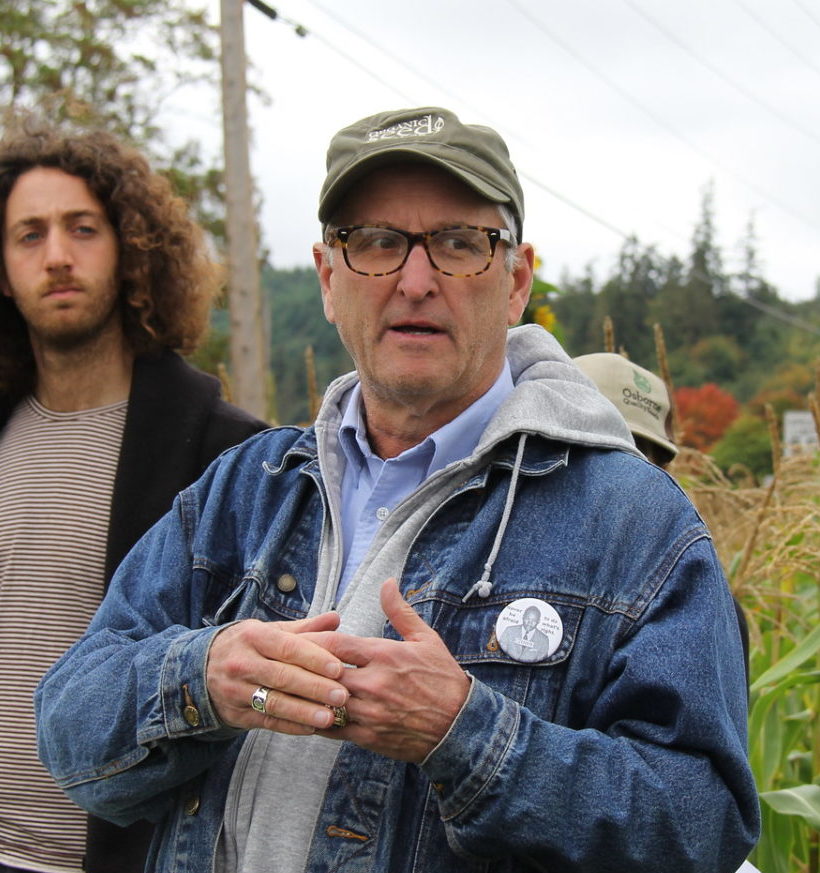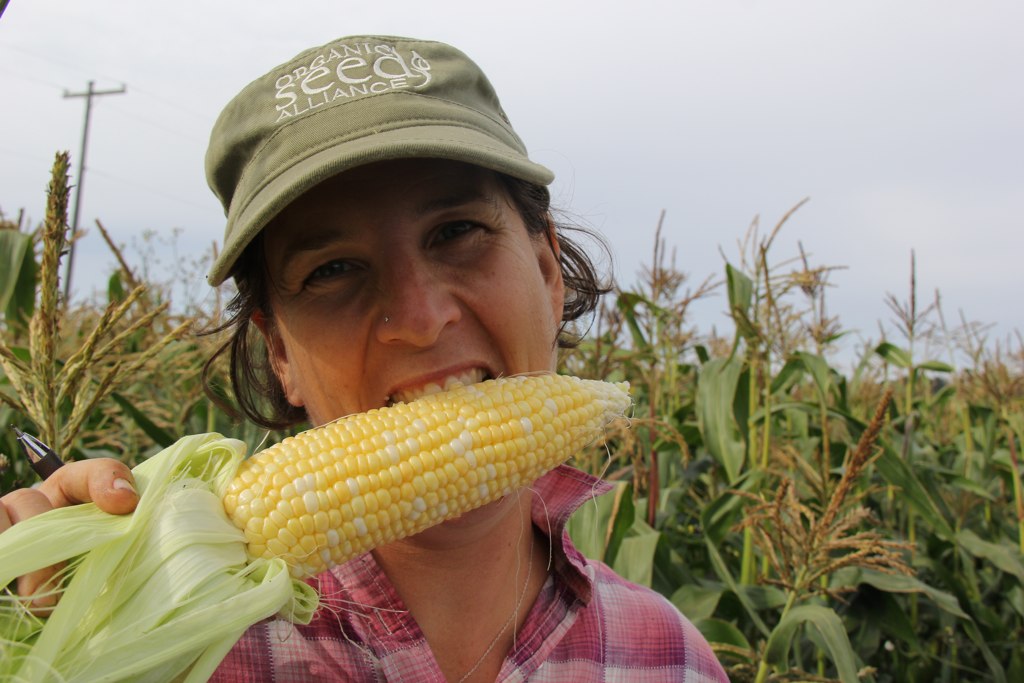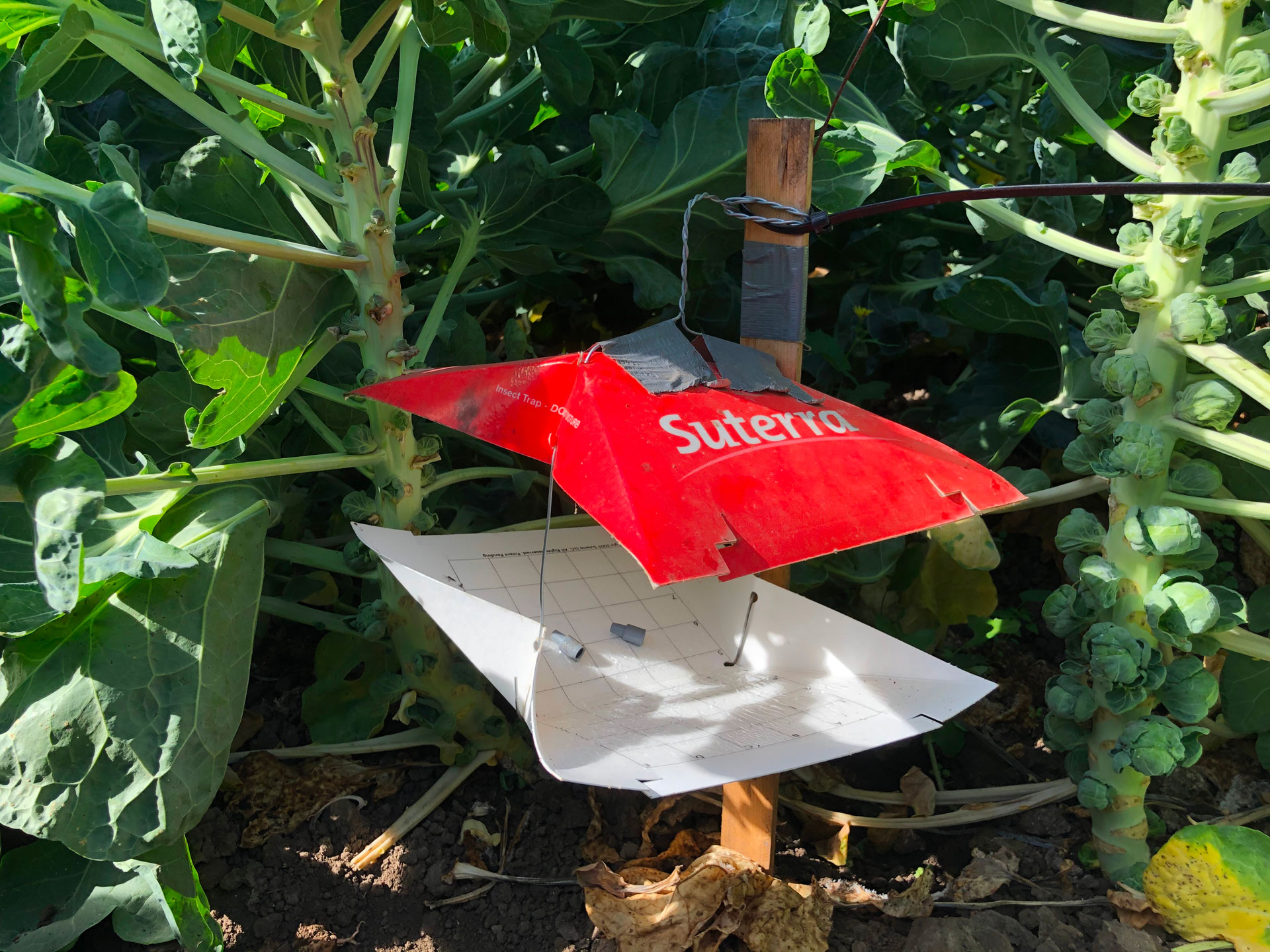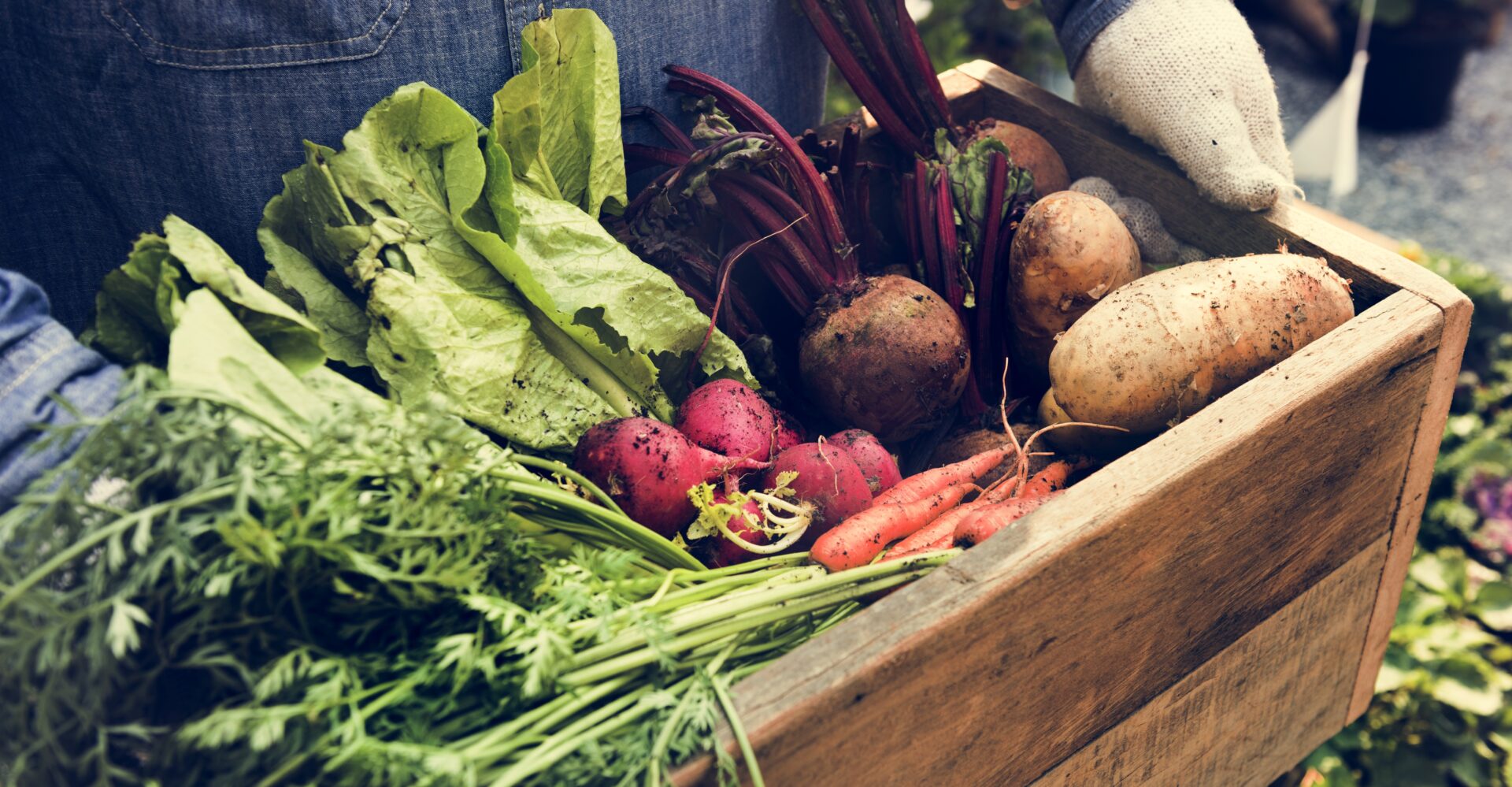
In the wake of the COVID-19 pandemic, farmers across the U.S. are finding themselves on the front lines of ensuring food security and community resilience. With restaurant closures and the cancelations or postponements of farmers markets, producers are facing unexpected financial losses. Meanwhile, there is an unprecedented demand for seed and local produce. The COVID crisis highlights that the long-term stability of organic food systems depends on access to organically grown seed bred from the beginning to be successful on organic farms.
The performance and resiliency of vegetable varieties begin with genetics. Plant breeders select desirable traits from crops growing under organic conditions. However, the field of organic plant breeding is still in its infancy, and the organic seed supply is still growing to meet demand. In 2002, the USDA’s National Organic Program (NOP) jumpstarted demand for organic seed by creating the first requirement for certified growers to use certified organic seed. This regulation states that certified organic producers must use organically grown seed except “when an equivalent organically produced variety is not commercially available.”
Sourcing organic seed can be a challenge for some organic farmers. Lack of specific varieties, insufficient quantities, and scarcity of organic seed producers all play a role. Most producers rely at least partially on conventionally produced seed to meet their needs. Some of these seeds are grown using synthetic inputs for pest, disease, and weed control, as well as plant nutrition. This system proliferates plant varieties that are dependent on chemical inputs, increasing the carbon footprint of our seed.
Conversely, organic plant breeding focuses on plant genetics—such as disease resistance and regional adaptation—that enhance performance under organic conditions, where the use of synthetic chemical inputs is prohibited. Since organic farms vary a tremendous amount in terms of size, management and cultivation strategies, and the diversity of crops produced, it is important that plant breeding addresses region-specific needs as well the needs of organic agriculture in general.
Participatory Approaches to Plant Breeding
Organic plant breeding often embraces a participatory model, engaging farmers, university plant breeders, and chefs and other food system stakeholders to set breeding priorities and evaluate results. In this way, participatory plant breeding combines the practical experience of farmers with the technical expertise of formal plant breeders, resulting in more high-quality organic varieties and an increased number of farmers with skills to develop or improve their own varieties.
Organic Seed Alliance (OSA) is a mission-driven organization based in Port Townsend, Wash., that works to ensure farmers have the organic seed they need to be successful. OSA organizes and conducts participatory plant breeding projects, regionally and nationwide, to identify gaps in the food system, generate new varieties, and train farmers in improving their own varieties.
An example of OSA’s work in generating regional seed solutions through plant breeding is a project that is supporting sweet corn growers in Washington State. As a southern species domesticated in Mexico 10,000 years ago, most corn varieties prefer more heat and a longer growing season than the maritime Pacific Northwest climate provides.
Currently, the demand for locally grown organic sweet corn exists but is difficult to supply. Pacific Northwest producers looking for ways to tap into the sweet corn market don’t have many options for seed. The best varieties are hybrids bred for conventional systems. For some of the region’s growers, these varieties are optimal. For many others, the desired choice is certified organic seed that is open-pollinated and has been adapted to their region’s climate and for organic systems.

Sweet Corn for the Pacific Northwest
In 2008, OSA was invited to participate in a breeding project to develop a new open-pollinated sweet corn variety that exhibited superior flavor and good yield in Northern climates across the country. Because the variety is open-pollinated, farmers can save the seed and adapt the genetics to their own farm. Other partners included Bill Tracy, a public sweet corn breeder at the University of Wisconsin-Madison, and organic farmer Martin Diffley in Minnesota. This participatory breeding project began by accessing, crossing, and selecting high-quality breeding material from Dr. Tracy’s collection. The project was supported in part by the USDA’s Organic Research and Extension Initiative through the Northern Organic Vegetable Improvement (NOVIC) project. In 2014, the team released ‘Who Gets Kissed?,’ an organic variety that is still commercially available and grown in more than 40 states.
This breeding success led OSA, in collaboration with Dr. Tracy and NOVIC partners once again, to further adapt the sweet corn population to Pacific Northwest growing conditions, specifically the Olympic Peninsula. In the cool, wet spring soils of the Peninsula’s maritime climate, sweet corn is especially prone to fungal and bacterial rot prior to germination. This has led growers to transplant sweet corn instead of direct seeding once the soil has warmed for reliable and robust crop growth. The ability to direct seed is preferable, as transplanting requires additional labor and materials.
Two organic farms on the Olympic Peninsula hosted the breeding work: Nash’s Organic Produce in Sequim and the Organic Farm School on Whidbey Island. Three breeding populations were divided among the two farms and OSA’s Research Farm in Chimacum. Each farm uses a slightly different approach to the breeding and selection process.
The plot grown at Nash’s is advanced through mass selection – wherein seeds are saved from the most desirable individuals in the population and used to grow the following year’s crop. At the Organic Farm School, seeds are saved and planted based on a strategy called “ear to row.” Using this strategy the seeds from each ear that is selected are grown out together in a row the following year, which allows the breeders to see the genetic similarities and differences among each row.

Putting Varieties to the Test
Taste testing is an important part of selecting the best ears in the corn patch. In order to conduct taste tests in the field without harvesting the ears (the ears need to be left on the plant in order for the kernels to fully mature for seed harvest), farmers pull back the husk to expose the top half of the ear and either take a bite from the ear while it’s still on the plant, or cut the tip of the ear to get a taste. Ears with superior flavor and robust production are tagged and marked for seed production and left on the plant. Seeds are then saved separately from individual ears and planted in corresponding rows the following year. Since each kernel of corn is individually pollinated, this ensures that each row shares maternal genetic material, which helps the farmers and breeders to distinguish which plants harbor good genetics.
With the mass selection strategy, the farmers and breeders may be selecting plants that look and taste good but may actually be genetically weak plants that happened to look good. This can be due to an environmental response rather than a genetic one – for instance, the plant may have been in a favorable surrounding microclimate where it may have happened to have gotten a little extra fertilizer, or extra water, or less pest pressure than its neighbor, rather than because it has strong, desirable genetics.
Shuttle breeding is another breeding method used at the OSA Research Farm. Each year the OSA team grows out 200 plots of genetically related sweet corn lines produced by our partners at UW-Madison, similar to the “ear to row” strategy, and evaluates and tastes them all for production and eating quality. From these 200 plots, around 15-20 of the best are selected for further breeding.
The seed for these plots is produced in Argentina, at Dr. Tracy’s winter nursery and only about half of the seed produced is sent to OSA to grow. Once the OSA team has selected the best plots each year, Dr. Tracy and his team go back and pull out seeds from each of the selected plots and send them down to their South American winter nursery for seed production. Since each kernel on an ear of corn is pollinated by a separate grain of pollen, each ear can contain the pollen from numerous other plants. The shuttle breeding strategy allows for production of seed from only plants that have been selected and deemed to be genetically superior. The seed produced at winter nursery in South America is then returned to Washington for planting the following spring. This process allows OSA and Dr. Tracy to make faster genetic progress in the breeding process.
As an excellent example of food system collaboration, a local organic grocer on the Olympic Peninsula, the Port Townsend Food Co-op, funded the inception of this regional breeding effort. Local farms agreed to produce enough sweet corn to feature in the store, and the Co-op offered support in exchange for the opportunity to engage their community in naming the variety. Seed from this new variety will be released to Olympic Peninsula sweet corn growers within the next couple of years.

Because the variety is open-pollinated, OSA has a number of resources on its website to support these growers in adapting this variety to their own farm conditions, including an on-farm plant breeding guide for sweet corn that is also available in Spanish. To find these and other resources on on-farm plant breeding and organic seed production, visit https://seedalliance.org/all-publications/. Or contact OSA’s research team at (360) 385-7192 or info@seedalliance.org.





